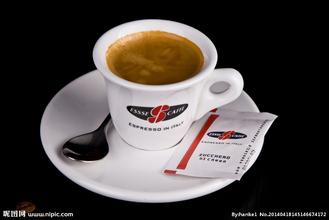Fragrant and delicious Nicaraguan Coffee Manor: flavor and taste characteristics of Joy Manor
Since July 1927, Augusto. Cesar. Sandino led the people in a guerrilla war against the US occupation, forcing the US military to withdraw in 1933. On February 21, 1934, the Commander of the Nicaraguan National Guard, Anastacio. Somocha. Garcia assassinated Sandino at the behest of US President Roosevelt. He became president in 1936 and established a pro-American "Cordillo" dictatorship for more than 40 years until 1979. The Sandinista National Liberation Front (SPLF) was established in 1964 to launch a revolutionary struggle against the Somocha dictatorship in the southwestern city of Nicaragua and the capital of Massaya province. Located at the eastern foot of Masaya Volcano, 25 kilometers northwest from Managua. The population is 43000 (1980). The industrial and commercial center of the surrounding agricultural area (which mainly produces tobacco). Famous for producing Indian handicrafts (embroidery, palm hats, etc.). There are tobacco, shoes, soap, leather and other industries. Rail, road and air transportation facilitate the port city of southeastern Nicaragua and the capital of the province of Zelaya. It is located at the mouth of the Escondido River in Bloomfield Bay. The population is 21000 (1980). It was a gathering place for pirates in the 16th and 17th centuries and later the capital of the British Moskitos coastal protectorate. It has been in Nicaragua since 1850. Due to the accumulation of sediment in the bay, import and export trade has to pass through the outer port of Bloom. Industry to wood processing, frozen sea shrimp, gold and silver jewelry processing. The house is made of wood and has a unique style. The steamboat can trace 100 kilometers from the Escondido River to the Nicaraguan national emblem in Lama, which was launched in 1971. The national emblem consists of three yellow edges symbolizing equality, truth and justice. The five green mountains symbolize Honduras, Guatemala, Nicaragua, El Salvador and Costa Rica, which used to make up the Central American Federation. Blue symbolizes the Pacific Ocean and the Caribbean Sea, which are separated by the Central American isthmus. The yellow on the top of the mountain reflects the volcanic plateau landform of the area. The "pole of freedom" and the "cap of freedom" are erected on the green mountain. The rainbow at the top symbolizes hope. The triangle pattern is surrounded by "Central America, Republic of Nicaragua" in Spanish. The English letters in the outer circle are the English names of Nicaragua, all in uppercase.
The suitable climate provides an excellent growth environment for the cultivation of coffee. The mineral-rich pozzolanic soil provides abundant nutrients for the cultivation of coffee trees. High-quality Nicaraguan coffee is also grown in the northern and central highlands of the country. The best coffee is produced in Matagalpa. The coffee produced here is highly respected by coffee lovers all over the world and gradually valued by the boutique community. Abundant precipitation, suitable temperature, high altitude, fertile soil, and unique planting ecology are the prerequisites for creating high-quality Nicaraguan coffee. Nicaragua has a low flavor, chocolate, caramel sweetness, obvious almond flavor and bright sour taste, which is different from the rising tone of bright fruit acid in Central America. The coffee planting ecology of Nicaragua has a unique environment, full of fertile volcanic soil, coupled with shade planting methods, has established a good growth physique, so that Nicaraguan beans not only have rich mellow but also fragrant taste, in the eyes of international coffee experts, it is regarded as top grade, and has gradually been paid attention to the characteristics of Nicaraguan coffee:
The finest Nicaraguan coffee is classified as Middle Estrich Tamant Altura (CentralEstrictamenteAltura) coffee, which has moderate acidity, delicious aroma and is very lovable. Poor quality coffee beans are widely used in blended coffee in many countries, and coffee production has been seriously affected for political reasons. Nicaraguan coffee industry is no exception. The 1979 revolution forced coffee planters to flee to Miami. A period of indecision followed, when the government considered whether to redistribute land (including many plantations), which led to a shortage of coffee and a decline in flavor: high-quality mixed, attractive aroma
Suggested baking method: deep roasting is more suitable for coffee producing areas of espresso coffee Niagagua, which can be said to have a unique geographical environment, some areas have a dry season of more than four months, and the sun is full. In the producing area of Dipido, Nueva Segovia is located in a high-altitude mountain area of 1100 meters, clean and beautiful rivers provide enough water, many shade tree species, fertile soil and excellent climate. Coffee beans from this producing area won the top five in the CoE (Cup of Excellence) contest to judge the most credible international organization of top coffee in 2006 and 2007.

Important Notice :
前街咖啡 FrontStreet Coffee has moved to new addredd:
FrontStreet Coffee Address: 315,Donghua East Road,GuangZhou
Tel:020 38364473
- Prev

Introduction to the rich and balanced coffee flavor manor of Valenford Manor, Jamaica
Tropical rainforest climate. The rainy season is from May to June and from September to November every year, with the most showers in January and May. The dry season is from December to March next year, and the weather turns cooler. The half-year period from June to the end of November is often hit by hurricanes and tropical storms. The north-central region is rich in rainfall, the climate is generally between 22 and 32 degrees, and the annual average temperature is 27 degrees. Jamaica is located in the northwest of the Caribbean Sea.
- Next

Introduction to the characteristics of Nicaraguan Coffee Flavor Manor with mediocre and mild Flavor
A city in southwestern Nicaragua and capital of Massaya province. Located at the eastern foot of Masaya Volcano, 25 kilometers northwest from Managua. The population is 43000 (1980). The industrial and commercial center of the surrounding agricultural area (which mainly produces tobacco). Famous for producing Indian handicrafts (embroidery, palm hats, etc.). There are tobacco, shoes, soap, leather and other industries. Rail, road and air transport facilities in Nicaragua
Related
- Does Rose Summer choose Blue, Green or Red? Detailed explanation of Rose Summer Coffee plots and Classification in Panamanian Jade Manor
- What is the difference between the origin, producing area, processing plant, cooperative and manor of coffee beans?
- How fine does the espresso powder fit? how to grind the espresso?
- Sca coffee roasting degree color card coffee roasting degree 8 roasting color values what do you mean?
- The practice of lattes: how to make lattes at home
- Introduction to Indonesian Fine Coffee beans-- Java Coffee producing area of Indonesian Arabica Coffee
- How much will the flavor of light and medium roasted rose summer be expressed? What baking level is rose summer suitable for?
- Introduction to the characteristics of washing, sun-drying or wet-planing coffee commonly used in Mantenin, Indonesia
- Price characteristics of Arabica Coffee Bean Starbucks introduction to Manning Coffee Bean Taste producing area Variety Manor
- What is the authentic Yega flavor? What are the flavor characteristics of the really excellent Yejasuffi coffee beans?

